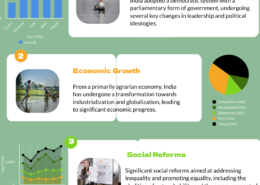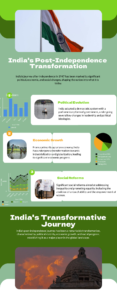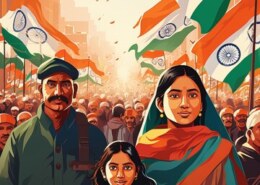ANSWERS PLZZZ!!
- Recent Questions
- Most Answered
- Answers
- No Answers
- Most Visited
- Most Voted
- Random
- Bump Question
- New Questions
- Sticky Questions
- Polls
- Followed Questions
- Favorite Questions
- Recent Questions With Time
- Most Answered With Time
- Answers With Time
- No Answers With Time
- Most Visited With Time
- Most Voted With Time
- Random With Time
- Bump Question With Time
- New Questions With Time
- Sticky Questions With Time
- Polls With Time
- Followed Questions With Time
- Favorite Questions With Time
Mains Answer Writing Latest Questions
-
Banking regulations in India aim to make banking accessible to everyone, especially those in underserved areas. The Reserve Bank of India (RBI) has introduced various measures to promote financial inclusion. One key initiative is the Pradhan Mantri Jan Dhan Yojana, which encourages opening no-frillsRead more
Banking regulations in India aim to make banking accessible to everyone, especially those in underserved areas. The Reserve Bank of India (RBI) has introduced various measures to promote financial inclusion. One key initiative is the Pradhan Mantri Jan Dhan Yojana, which encourages opening no-frills bank accounts with minimal requirements. This helps low-income individuals access banking services without high fees or complex documentation.
See less
The RBI also mandates that banks set up branches in rural and semi-urban areas to ensure that even remote populations have access to banking facilities. Additionally, the introduction of business correspondents (BCs) allows banks to reach out to people in far-flung areas through local representatives. Mobile banking and digital payment systems have further eased access, enabling people to manage finances through their phones. These efforts collectively help bring more people into the formal banking system, promoting economic growth and reducing inequality.
-
Introduction: India's complex religious landscape and historical background make religion and politics there closely intertwined. The interaction between these two domains has a major impact on the country's political structure. Historical Context: India has a millennium-long tradition of religiousRead more
Introduction:
India’s complex religious landscape and historical background make religion and politics there closely intertwined. The interaction between these two domains has a major impact on the country’s political structure.
Historical Context:
India has a millennium-long tradition of religious plurality, embracing Buddhism, Sikhism, Jainism, Islam, Christianity, and other faiths. Throughout the colonial era, the British government implemented a policy known as “divide and rule,” which deepened religious tensions and planted the seeds of communalism. The Indian Constitution created a secular framework after independence that guaranteed freedom of religion and maintained the state’s impartiality on religious issues.
Secularism and Its Challenges:
Being unique, Indian secularism aims to strike a compromise between state neutrality and religion plurality. Indian secularism recognises the religious identities of its citizens, as contrast with Western secularism, which promotes a rigid separation of church and state. This inclusive strategy seeks to treat all religions with equal respect.
But problems still exist. Political parties frequently use religious feelings to win over voters, which polarises society. Discussions on the nature of Indian secularism and how it should be implemented have been triggered by the advent of majoritarian politics, particularly with the spread of Hindutva ideology.
Communalism and Social Cohesion:
India’s social cohesiveness is seriously threatened by communalism, which has a propensity to erect religious divisions. Interfaith harmony is vulnerable to violent incidents like the anti-Sikh riots in 1984, the Gujarat riots in 2002, and more recent conflicts. These kinds of gatherings frequently have political undertones, with opposing factions using religious identities as a political tool.
Legal and Constitutional Safeguards:
The Indian Constitution offers a number of protections to maintain secularism. While Articles 14 and 15 establish equality before the law and forbid discrimination based on religion, Articles 25–28 guarantee religious freedom. The use of religion in political campaigns is outlawed by the Representation of the People Act of 1951. Nonetheless, there is still uneven application of these regulations.
Conclusion:
In India, the relationship between politics and religion is a complicated and dynamic phenomena. Political exploitation of religious identities persists in undermining the secular framework’s goal of preserving religious diversity and fostering peace. Sustaining India’s pluralistic democracy requires bolstering secular ideals, encouraging interreligious dialogue, and guaranteeing impartial law enforcement.
See less
-
The Pradhan Mantri Fasal Bima Yojana (PMFBY) has been instrumental in providing crop insurance to farmers in India, aiming to mitigate the financial risks associated with crop failures due to natural calamities. While it has expanded coverage and reduced premium rates, the effectiveness of PMFBY isRead more
The Pradhan Mantri Fasal Bima Yojana (PMFBY) has been instrumental in providing crop insurance to farmers in India, aiming to mitigate the financial risks associated with crop failures due to natural calamities. While it has expanded coverage and reduced premium rates, the effectiveness of PMFBY is mixed due to several challenges.
**Challenges:**
1. **Delayed Claims Settlement**: One of the major issues is the delay in the settlement of claims, which undermines farmers’ trust and defeats the scheme’s purpose of providing timely financial relief.
2. **Awareness and Accessibility**: Many farmers, especially small and marginal ones, are not fully aware of the scheme’s benefits or the process of enrolling and claiming insurance.
3. **Implementation Gaps**: Inefficiencies at the administrative level, including inaccurate yield data and inadequate infrastructure, hinder effective implementation.
4. **Private Sector Participation**: Reliance on private insurance companies, who sometimes prioritize profit over farmers’ welfare, can lead to higher premiums and limited coverage.**Improvements:**
1. **Streamlining Claims Process**: Implementing technology-driven solutions like satellite imagery and remote sensing can expedite and accurately assess crop damage, ensuring quicker claims settlement.
2. **Increasing Awareness**: Conducting widespread awareness campaigns and training programs can help farmers understand and effectively utilize the scheme.
3. **Strengthening Infrastructure**: Investing in better data collection and monitoring systems can improve implementation efficiency.
4. **Policy Adjustments**: Ensuring that insurance terms are more farmer-friendly and reducing the dependence on private insurers by enhancing public sector involvement can make the scheme more inclusive and effective.By addressing these challenges, PMFBY can better achieve its goal of providing robust financial protection to India’s farmers.
See less
-
The fall of the Soviet Union was a complex event with several key contributing factors: Economic Stagnation: The Soviet command economy, while achieving rapid growth initially, became sluggish and inefficient by the 1970s. Centralized planning stifled innovation and consumer goods production. RelianRead more
See lessThe fall of the Soviet Union was a complex event with several key contributing factors:
Economic Stagnation:
- The Soviet command economy, while achieving rapid growth initially, became sluggish and inefficient by the 1970s.
- Centralized planning stifled innovation and consumer goods production.
- Reliance on heavy industries came at the expense of agriculture and light industry, leading to shortages and low living standards.
- The decline in oil prices in the 1980s, a major source of revenue, further crippled the economy.
Political Repression:
- The authoritarian one-party system stifled dissent and political participation.
- Lack of political reforms led to a legitimacy crisis for the Communist Party.
- Gorbachev’s reforms of glasnost (openness) and perestroika (restructuring) aimed to revitalize the system, but they backfired.
- Glasnost allowed for criticism of the government, fueling nationalist movements in various republics.
Nationalist Aspirations:
- The Soviet Union was a multi-ethnic state, and many ethnic groups within its borders resented Russification policies.
- With the loosening of central control under Gorbachev, these nationalist movements gained momentum, demanding greater autonomy or even independence.
The Interplay:
- Economic stagnation led to declining living standards and growing public dissatisfaction.
- Political repression fueled resentment towards the central government.
- With glasnost, nationalist aspirations found voice, further weakening central authority.
- The government’s inability to address these issues ultimately led to the Soviet Union’s fragmentation.
Consequences:
- Domestically: The Soviet Union dissolved into 15 independent states. Many former republics faced economic hardship and ethnic tensions. Russia emerged as the dominant successor state, but struggled with a tumultuous transition to a market economy and democracy.
- Internationally: The Cold War ended with the collapse of the Soviet Union, leaving the United States as the sole superpower. The global power balance shifted dramatically. New regional conflicts arose, and concerns about nuclear proliferation increased.
How does India’s constitutional reservation system affect the political landscape and social dynamics?
-
India's constitutional reservation system, designed to uplift historically marginalized communities like Scheduled Castes (SCs), Scheduled Tribes (STs), and Other Backward Classes (OBCs), profoundly impacts the political landscape and social dynamics. Politically, it has led to the rise of caste-basRead more
India’s constitutional reservation system, designed to uplift historically marginalized communities like Scheduled Castes (SCs), Scheduled Tribes (STs), and Other Backward Classes (OBCs), profoundly impacts the political landscape and social dynamics. Politically, it has led to the rise of caste-based parties and leaders who advocate for the rights of these groups. This system has shifted political power from dominant castes to those previously marginalized, fostering greater representation in legislatures and public offices.
Socially, the reservation system has facilitated increased access to education, employment, and political participation for disadvantaged communities, contributing to their socioeconomic advancement. However, it has also sparked debates and tensions among different caste groups, particularly concerning the perceived fairness and effectiveness of the system. Some argue that reservations perpetuate caste identities and social divisions, while others see them as essential for achieving true equality in a deeply stratified society.
The system’s impact is dual-edged: while it has empowered millions and helped address historical injustices, it has also led to competitive caste politics and sometimes exacerbated social tensions, reflecting the complex interplay between affirmative action and societal harmony.
See less
-
In the times of political turbulence, both unity and the division has taken place through strong instruments of art and culture. In order to safeguard our commong art and culture we need to: Foster Dialogue: We have to figure out the healthy and well mannered discussions of different points of viewRead more
In the times of political turbulence, both unity and the division has taken place through strong instruments of art and culture. In order to safeguard our commong art and culture we need to:
Foster Dialogue: We have to figure out the healthy and well mannered discussions of different points of view that are existing in the same society.
It is understanding and so we reduce the chance while also foster positive intent that art won’t be used to vilify fellow human beings.
Foster Pluralism in Culture: Cultivate and recognise the various forms culture take place, knowing that art Culture is an eclectic framework.Cultural Protectionism
Harden Protectionist : Strong legal protections to thwart vandalism or destruction of cultural landmarks and artifacts
Ally with efforts to preserve and restore cultural heritage sites
Stance: Advocate for global collaboration in order to prevent the illicit trade of cultural artifactsSupport Independent Artists:
Give theaters, galleries and independent artists a place to create without censorship (or they would be driven to the square).
Provide financial and logistical roleplay support for the arts and culture.Education and Awareness:
…increase cultural understanding of cultural diversity and threats posed by exploitation & vandalism;
-Develop critical thinking and media literacy in order to differentiate real cultural expression from the weaponized form.International Cooperation
See less
– Strengthen international cooperation for the protection of cultural heritage in order that cultural heritage be promoted even in times war
In what ways did the ancient Mesopotamian and Egyptian societies differ from their political and social structures?
-
This answer was edited.
The Egyptian and Mesopotamian civilization developed simultaneously, its origins date back to 3500 bc. Both civilizations were sometimes influenced by each other. The Egyptian civilization was offered stability by the river Nile and the Mesopotamian - Persians developed in the river Tigris and EuphrRead more
The Egyptian and Mesopotamian civilization developed simultaneously, its origins date back to 3500 bc. Both civilizations were sometimes influenced by each other. The Egyptian civilization was offered stability by the river Nile and the Mesopotamian – Persians developed in the river Tigris and Euphrates , formerly called the Babylonian or Babylonian – Assyrian civilization.
Both the Egyptian and Mesopotamian civilizations differed from each other in many fundamental ways. Egyptians were naturally protected due to there geography while Mesopotamians were always under the threat of foreign incursions. Unlike Egyptians Mesopotamians were also threatened by regular floods. Mesopotamian culture too was more warlike and pessimistic than Egyptians.
The political structure of Egyptian was unified compared to the Mesopotamians. The King was supreme in both the civilizations but Egyptians had centralized political outlook and The Mesopotamians had decentralized political structure.
For most part Egyptian population were divided into five classes 1. The royal family 2. The priests 3. The nobles 4. middle class 5. peasants. During the New Kingdom another class was added of professional soldiers. On the contrary Mesopotamians had four classes 1. Royalty 2. upper class 3. middle class 4. lower class. Polygamy was permitted under pharaohs of Egypt But normally the basic unit of family was of monogamous nature. Even Pharaohs, who could keep a harem of secondary wives and concubines had a chief wife. Concubinage was socially reputable institution and women were not entirely subordinated to Men under Egyptian civilization. Mesopotamians had rigid policies towards women, who could not even marry of her choice. Under the Mesopotamians women were completely subordinated to Men.
See less
How can India encourage greater youth participation and representation in politics and policymaking?
-
India can encourage greater youth participation and representation in politics and policymaking by implementing the following strategies: Education and Awareness: Incorporate civic education: Integrate civics and political science into school curricula to educate students about the importance of polRead more
India can encourage greater youth participation and representation in politics and policymaking by implementing the following strategies:
Education and Awareness:
- Incorporate civic education: Integrate civics and political science into school curricula to educate students about the importance of politics and their role in it.
- Organize workshops and seminars: Conduct regular workshops, seminars, and conferences to raise awareness about politics, democracy, and the importance of youth participation.
- Use social media: Utilize social media platforms to disseminate information about politics, policies, and opportunities for youth engagement.
Inclusive Political Institutions:
- Electoral reforms: Introduce electoral reforms to ensure equal representation of youth in political parties, legislatures, and government institutions.
- Youth-friendly electoral processes: Implement youth-friendly electoral processes, such as online voting systems, to increase participation.
- Inclusive party structures: Encourage political parties to have inclusive party structures, with representation for youth, women, and marginalized communities.
Opportunities for Youth Engagement:
- Youth councils: Establish youth councils or advisory boards at the national, state, and local levels to provide a platform for youth voices to be heard.
- Internships and fellowships: Offer internships and fellowships in government institutions, political parties, and NGOs to provide hands-on experience for young people.
- Mentorship programs: Establish mentorship programs that pair young people with experienced politicians or professionals to guide them in their political journey.
Capacity Building:
- Leadership development programs: Offer leadership development programs that focus on building skills such as communication, negotiation, and public speaking.
- Capacity-building workshops: Conduct workshops on policy analysis, advocacy, and campaign management to equip young people with the skills they need to participate in politics.
- Networking opportunities: Provide opportunities for young people to network with other young politicians, activists, and leaders to build relationships and learn from each other’s experiences.
Addressing Barriers:
- Address financial barriers: Provide financial support for young people who want to participate in politics, such as scholarships or funding for campaigns.
- Address gender barriers: Implement policies to address gender barriers and promote equal representation of women in politics.
- Address accessibility barriers: Ensure that political institutions are accessible to people with disabilities by providing accommodations such as sign language interpretation or audio descriptions.
See less




India is still considered a developing country primarily due to several key factors that hinder its progress towards becoming a developed nation. Firstly, despite rapid economic growth and advancements in various sectors, India faces persistent challenges such as poverty, income inequality, and lackRead more
India is still considered a developing country primarily due to several key factors that hinder its progress towards becoming a developed nation.
Firstly, despite rapid economic growth and advancements in various sectors, India faces persistent challenges such as poverty, income inequality, and lack of widespread access to basic services like healthcare and education. These disparities are significant and continue to widen the gap between the affluent and the marginalized populations.
Secondly, infrastructure development remains inadequate in many parts of the country. While urban centers showcase modern infrastructure, rural areas often lack basic amenities like roads, electricity, and sanitation facilities, which are crucial for sustainable development.
Thirdly, India’s demographic dividend, characterized by a large and youthful population, presents both opportunities and challenges. While the youth population can drive economic growth and innovation, issues such as unemployment and underemployment remain prevalent, indicating a mismatch between skill development and job market needs.
Moreover, governance issues, bureaucratic inefficiencies, and corruption have historically impeded effective policy implementation and economic progress. These factors, combined with environmental challenges and regional disparities, contribute to India’s classification as a developing nation despite its economic potential and global influence.
In essence, while India has made significant strides in various domains, addressing these multifaceted challenges comprehensively is essential to transitioning from a developing to a developed country status.
See less